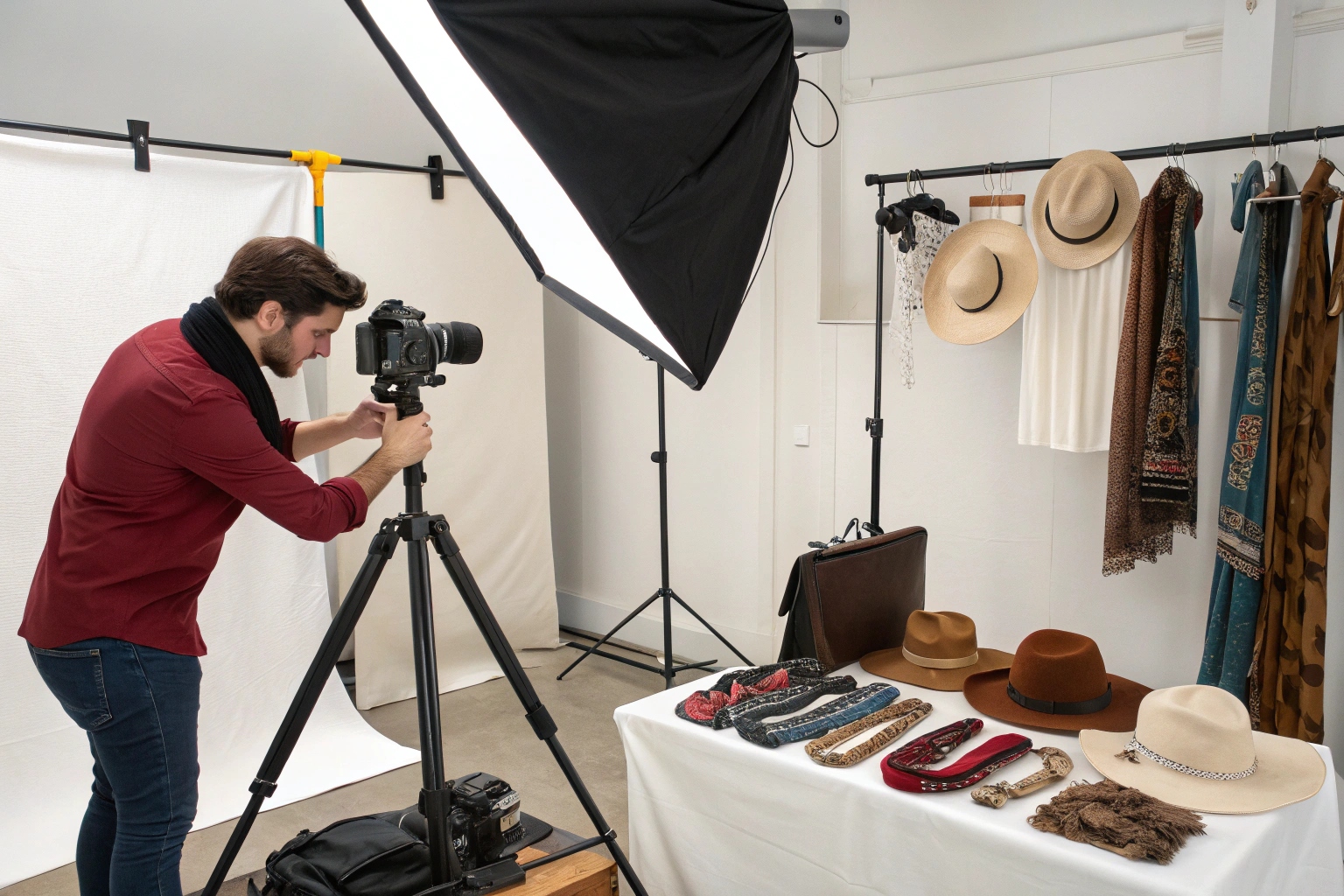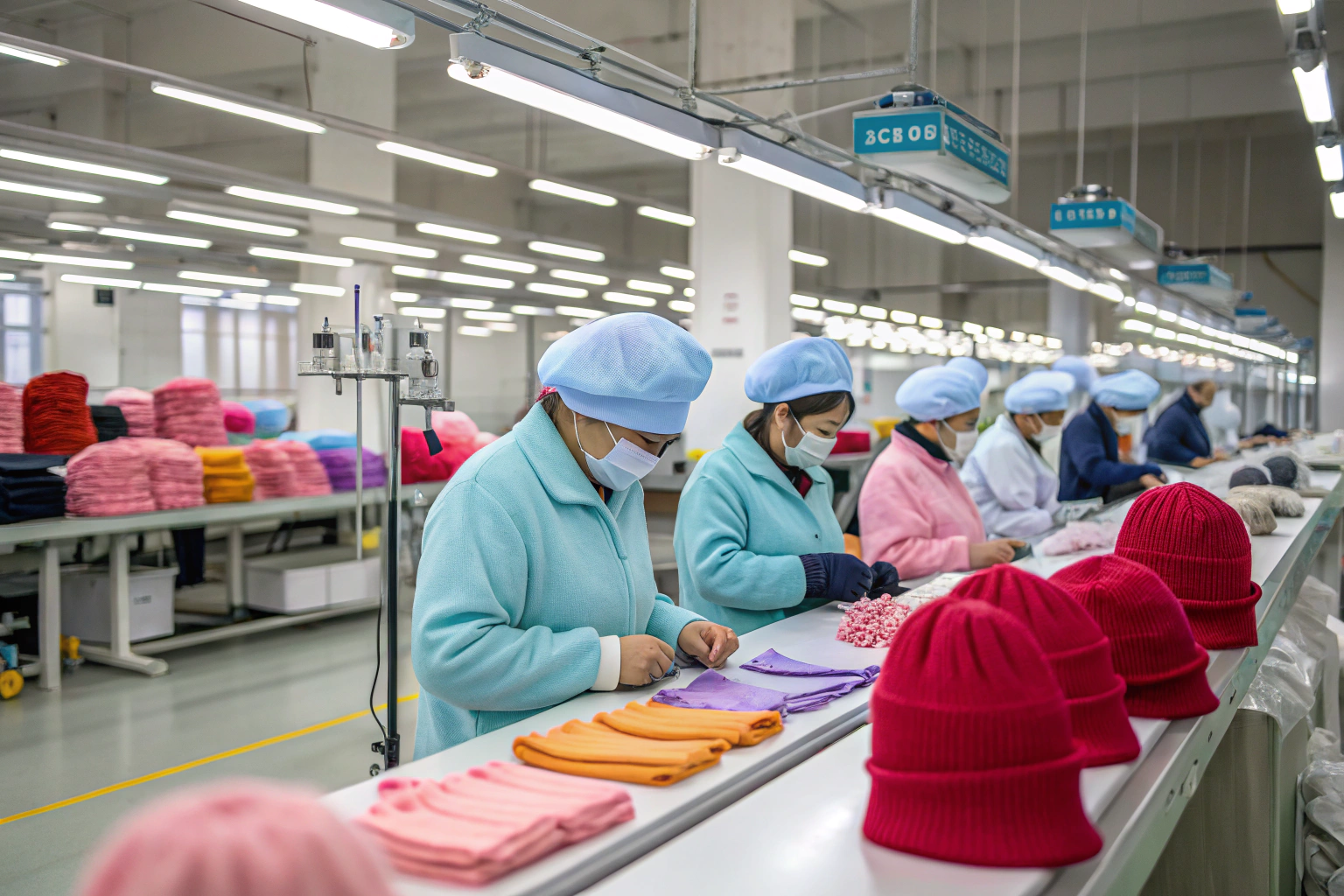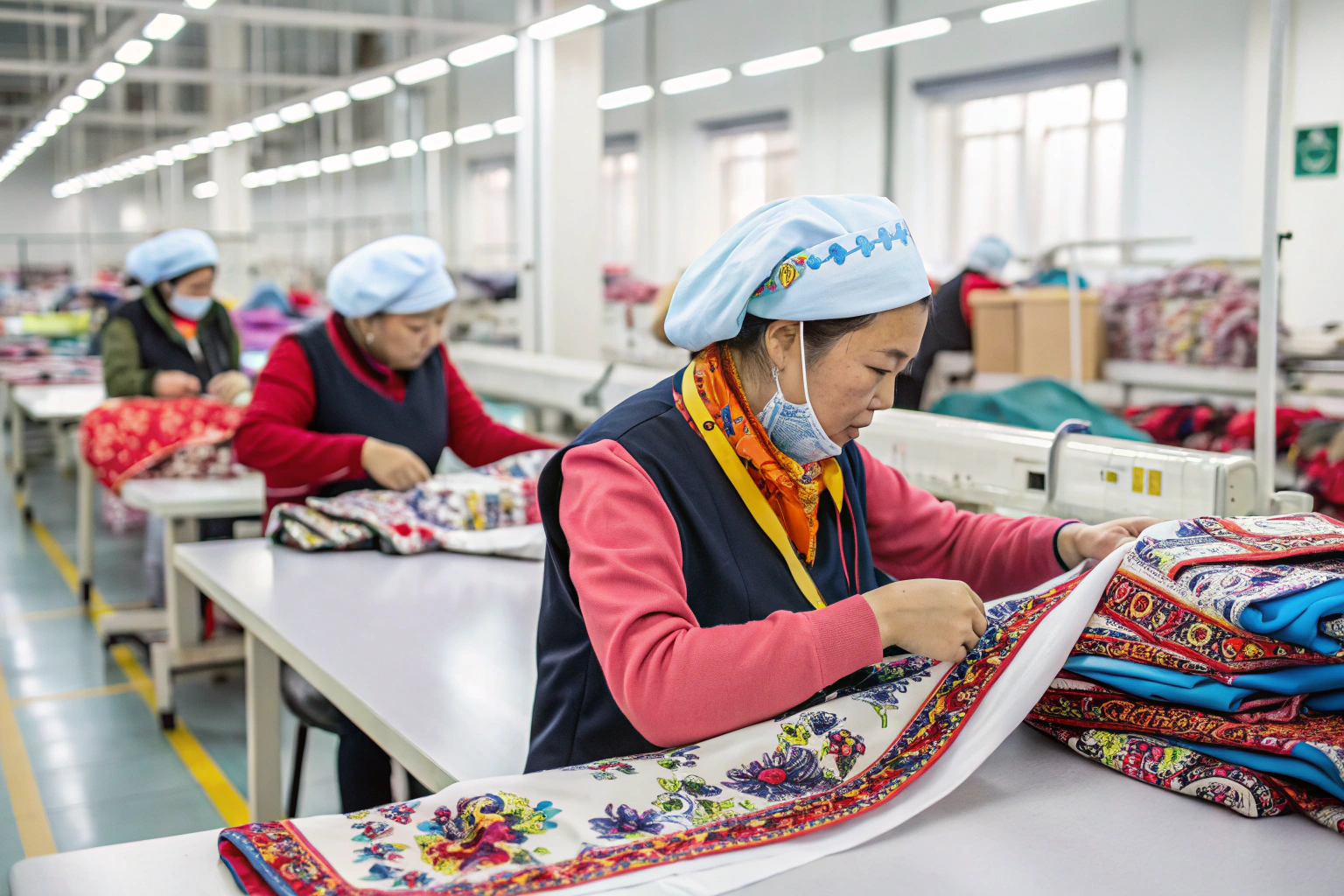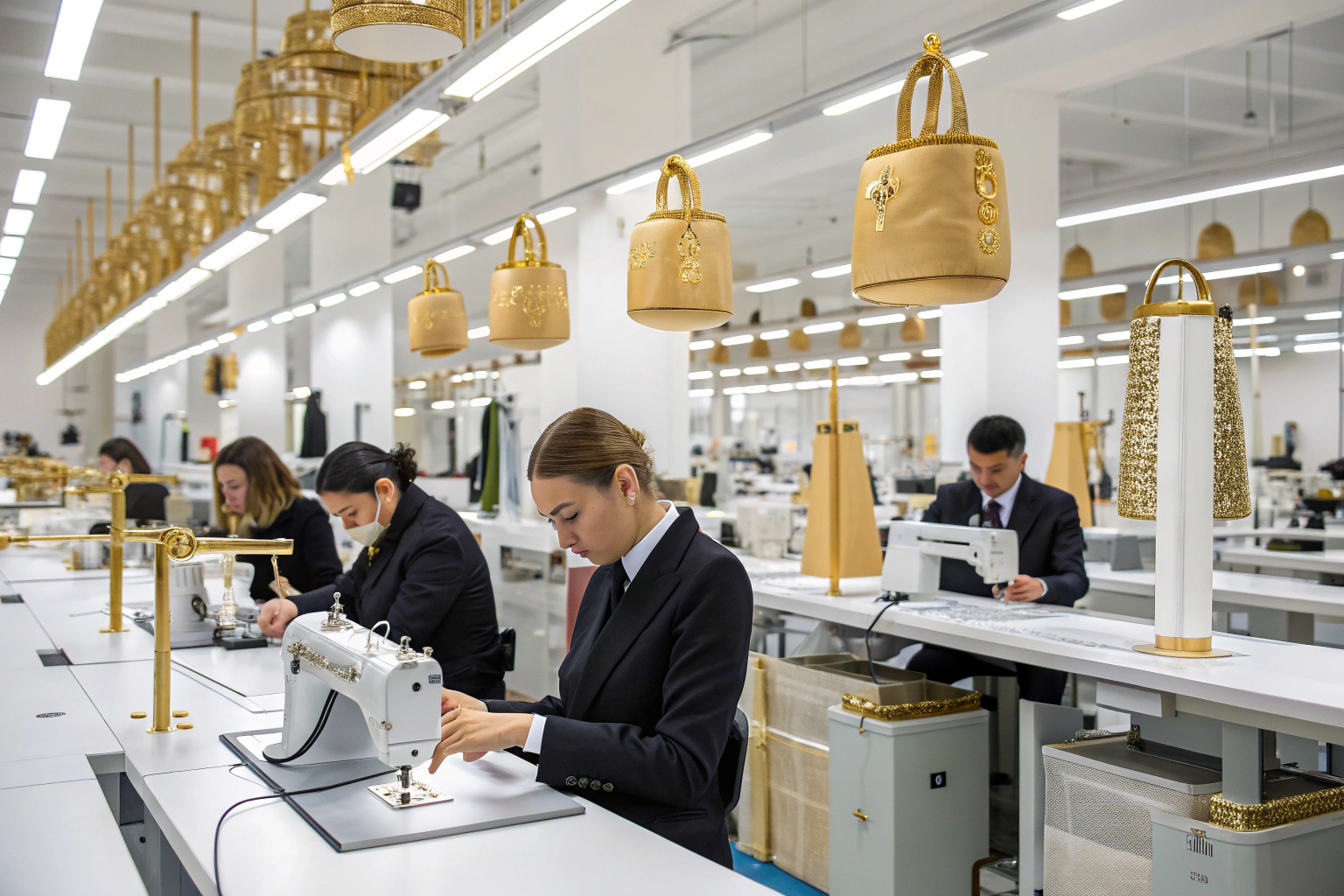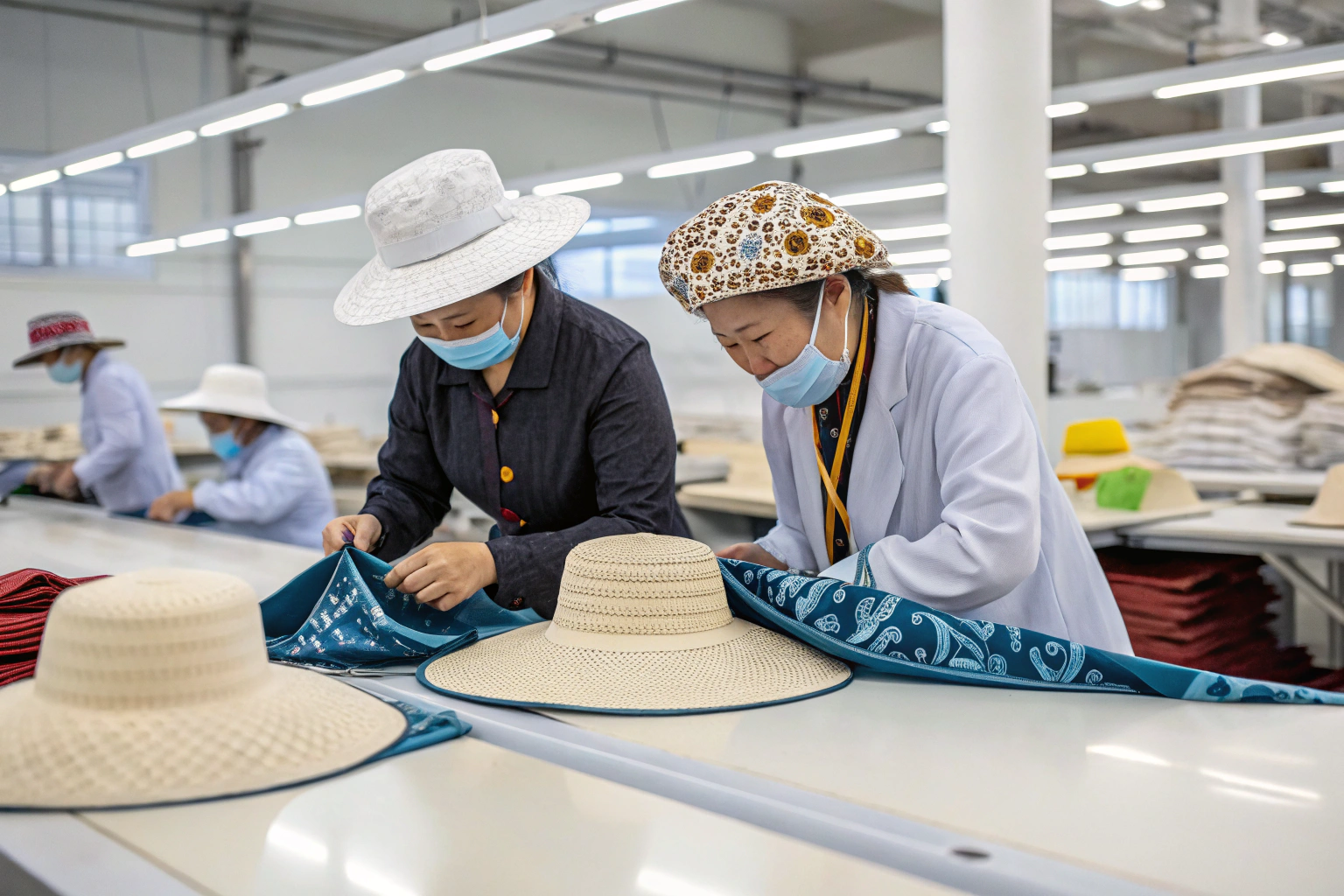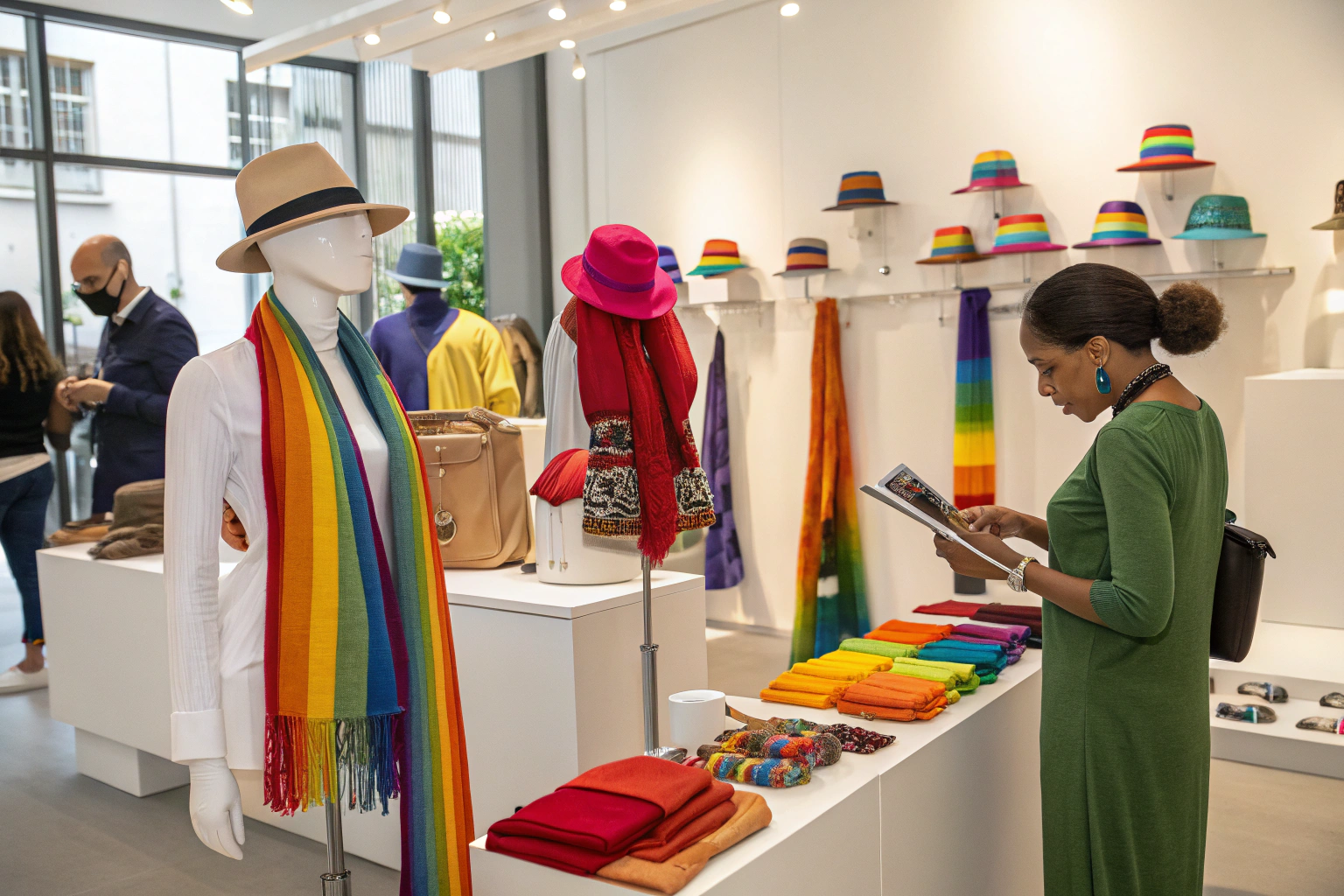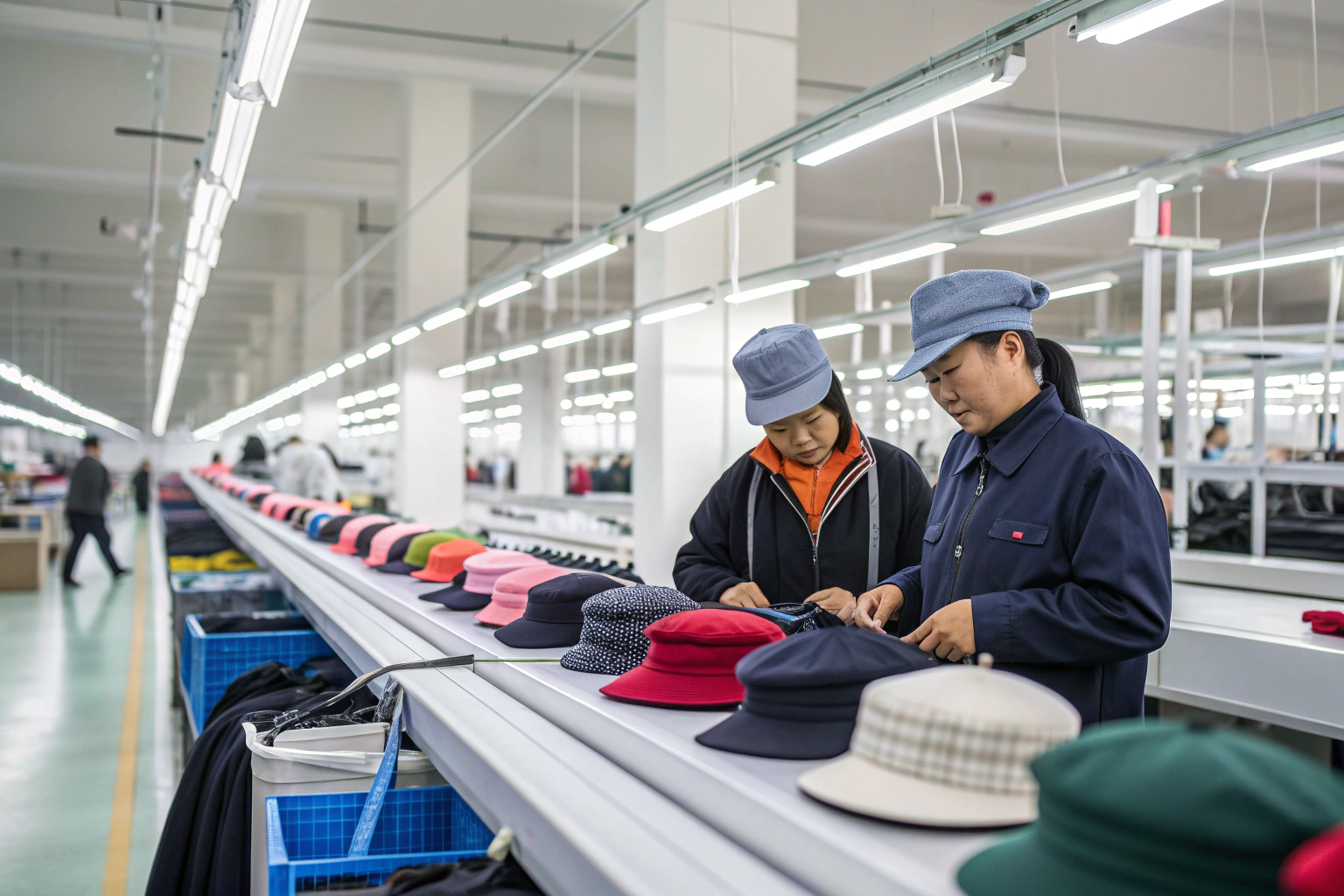Accessories might be small, but photographing them for e-commerce is no small task. Whether it's a pair of gloves or a statement headband, bad lighting, reflections, or cluttered styling can ruin a potential sale. Many sellers fail to capture the true value of their products because their photos look inconsistent or poorly lit.
To photograph accessories for e-commerce successfully, use clean backgrounds, soft lighting, proper angles, consistency, and detailed shots that show texture and function.
At AceAccessory, we support our clients by creating image-ready samples that photograph beautifully and deliver visual consistency across platforms. Here’s a breakdown of everything we’ve learned about high-converting accessory photography.
How Should You Set Up Lighting for Accessory Photos?
Lighting can make or break your accessory shots. It reveals texture, shape, stitching, and detail—especially for items like embroidered caps or satin scarves.
Use diffused natural light or softbox lighting to create even, shadow-free images that highlight your product without glare.
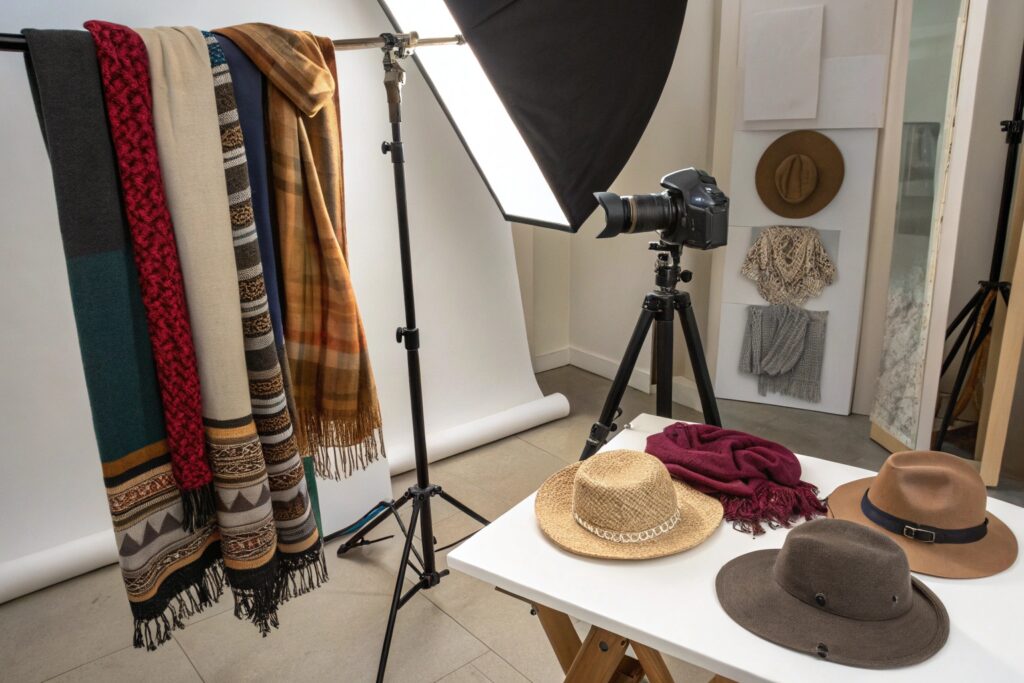
What lighting equipment works best?
Softboxes or ring lights work great for small to medium-sized accessories. They minimize harsh shadows and provide a consistent color tone. Use a white reflector on the opposite side to soften contrast and fill in dark areas.
Avoid overhead or single-source lights unless you're intentionally going for a dramatic look. We recommend a three-point lighting setup for e-commerce: key light, fill light, and backlight.
How do you reduce reflections or glare?
For shiny items like sunglasses or metallic belt buckles, use a polarizing filter on your camera lens. You can also adjust the angle of lighting to bounce glare away from the camera.
Glossy accessories should be photographed slightly off-center from the light source, and matte props can help absorb excess brightness.
What Backgrounds Work Best for E-commerce Accessories?
The background is more than just visual space—it sets the mood and frames the product for the shopper’s eye.
Pure white backgrounds are ideal for marketplaces like Amazon, but textured or lifestyle setups help bring your brand story to life on your own website or social media.
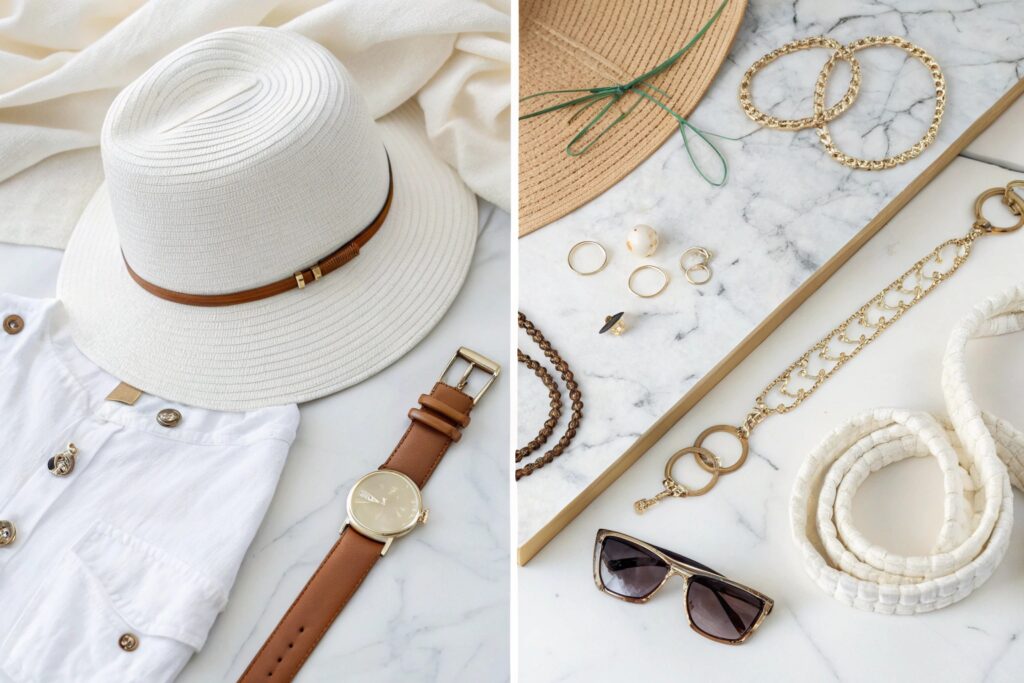
When should you use white backgrounds?
Use a clean white or light grey background for platforms like Amazon and Walmart Marketplace. These backgrounds ensure uniformity and reduce distractions.
White also makes photo retouching and shadow editing easier. For consistency, shoot all your angles—front, side, and detail—against the same backdrop.
How do lifestyle and textured setups help?
Lifestyle photos help buyers imagine using the product. For instance, a scarf draped over a coat hook or a belt styled with denim creates visual storytelling. Use props sparingly—let the accessory shine.
For textured setups, try wood, velvet, or stone slabs behind jewelry or hair clips. Just ensure colors don’t clash. Platforms like Etsy encourage lifestyle variety.
What Angles and Shots Should You Include?
Multiple angles give buyers full confidence to click “Add to Cart.” Incomplete visuals lead to hesitation or even returns.
Include a range of images: hero shot, side view, close-up, lifestyle image, and packaging photo to reduce buyer uncertainty.
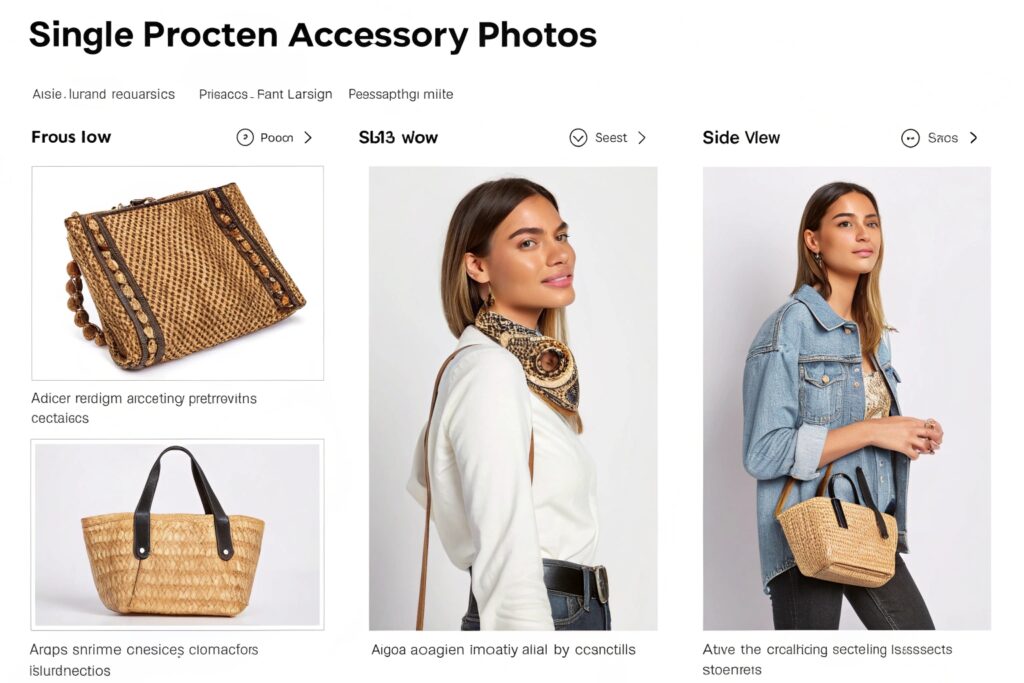
What is the must-have shot list?
- Hero Shot – Front-facing image, centered, clear focus
- Side View – Shows depth and profile
- Detail Shot – Zoomed-in image of stitching, hardware, or material
- Model Shot – Shows item scale and fit
- Packaging Shot – Especially important for gifting or branding
We advise clients to also shoot animated GIFs or short video loops showing texture movement—especially for items like fringe scarves or flexible belts.
Should every product have a model image?
Yes, when possible. Model images help buyers assess size and proportion. For headwear or belts, they’re essential. If you can't afford models, use mannequins or digital mockups like those from Smartmockups.
Just make sure the model styling matches your brand identity. For luxury accessories, use soft lighting and elegant poses. For youth-focused brands, natural light and lifestyle scenes work best.
How Do You Ensure Consistency Across a Product Line?
Consistency isn’t just visual—it builds trust. Buyers expect professional, predictable experiences.
Use photo templates, lighting presets, and batch editing to keep your product catalog visually unified across all listings.
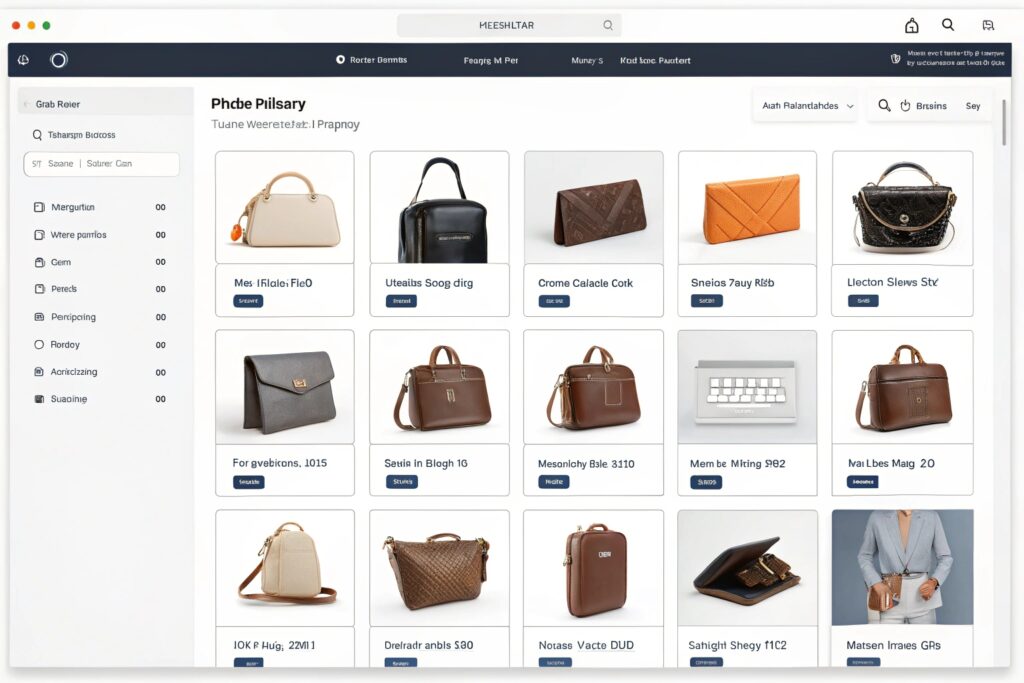
How do you standardize your photos?
Create a brand-specific style guide:
- Background color (e.g., #ffffff)
- Image resolution (at least 2000px width)
- Margin spacing
- Watermark placement (if used)
- Shadow style (natural vs. drop shadow)
Tools like Lightroom Presets or Canva Pro allow you to batch process photos. We also recommend naming images with SKU codes to speed up catalog uploads.
How often should you update photos?
Refresh product photos seasonally or when you update packaging. If buyers complain about misleading size or texture, consider re-shooting close-ups with a hand or measurement prop for scale.
Keep backup raw photos on cloud storage platforms like Dropbox or Google Drive for future repurposing or editing.
Conclusion
Photographing accessories for e-commerce is a balance of art and technical precision. From clean lighting setups and white backgrounds to detailed close-ups and model shots, every decision impacts how your product performs online.
At AceAccessory, we help buyers design products that not only sell well but also look great in every frame. Whether you’re launching a headband collection or restocking embroidered hats, applying these photo best practices ensures your visuals work as hard as your products.
Professional photography elevates not just your accessory—but your brand presence and buyer trust.

